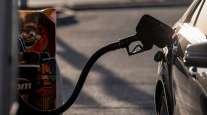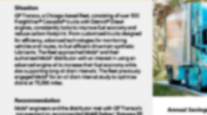The Good With the Bad
These days, it seems that no good news comes without some offsetting bad tidings. The democratic wave that has been sweeping through the Middle East is a good example of this phenomenon. The democracy movement has fed the spiral of rising fuel costs, as traders grow concerned about potential supply disruptions caused by the demonstrations that have led to leadership changes and revolts.
And these rapidly rising fuel costs are increasing concerns among analysts that the economic recovery could be jeopardized as consumers are pinched by rising prices at the pump and for other goods.
A less dramatic example is playing out here as the financial rebound has fed some serious truck-buying by fleets that have delayed purchases through the recession. Now, faced with freight growing volumes, many carriers are moving to modernize their equipment.
Last week, we learned that April heavy-duty truck orders were 28,900, the fifth straight month that orders have exceeded the 25,000 level the manufacturers seem to regard as the threshold for robust times. For contrast, orders in the middle of 2010 hovered between 10,000 and 15,000 units.
In terms of sales of heavy-duty trucks, volume in the first three months of 2011 was 34.1% higher than last year, and the results in March were 44.2% above a year ago. Even the March total of just over 13,000 sales was well below the order volume we’re seeing.
The rising orders level has now stretched out delivery times, with ACT Research reporting last week that the backlog at OEMs has now reached 108,000 vehicles. We haven’t seen order backlog volumes in that neighborhood since late in 2006.
But mixed in with this good news is another sign of the bad being caused by out-of-control fuel prices: higher truck prices.
At least three of the four major heavy-duty truck manufacturers in North America have added surcharges to cover the cost of rising commodities prices for the components they put in the new vehicles.
Rubber, steel and aluminum prices have all been rising, in part because of rising fuel costs and in part because of increased demand resulting from the recovery.
On the whole, most of us are probably prepared to pay a little more in return for a strengthening of business levels. The danger here, however, is no one knows how high fuel prices will go, and there is clearly a point where they could snuff out the recovery.




